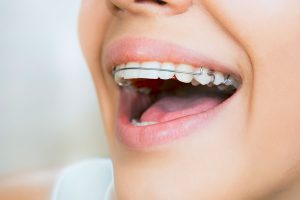Maintaining proper care for braces is fundamental to achieving successful orthodontic treatment. Braces play a key role in aligning teeth and improving overall oral health. To maximize your braces, you need to follow specific hygiene practices and lifestyle adjustments. Let’s explore helpful tips and techniques for maintaining braces and addressing common issues.
Key Steps for Maintaining Braces
Proper maintenance not only preserves the condition of braces but also significantly reduces the risk of complications such as cavities, gum issues, or prolonged treatment times.
- Brush Regularly
Brushing your teeth after every meal is key to maintaining oral hygiene. Use a soft-bristled toothbrush and fluoride toothpaste to clean all surfaces, including around the brackets and wires. Angling the toothbrush to reach both the upper and lower edges of the brackets helps remove trapped food particles.
- Floss Daily
Flossing is an integral part of keeping braces clean. Special tools, such as floss threaders or orthodontic floss, can assist in reaching areas between braces and teeth. Flossing daily helps remove plaque buildup, decreasing the risk of cavities and gum disease during treatment.
- Use Mouthwash Twice Daily
Using an antimicrobial mouthwash twice a day supports the hygiene routine. It reduces bacteria levels, helping to maintain a healthy oral environment. Swishing for at least 30 seconds makes sure the solution penetrates hard-to-reach spots around brackets and wires.
- Avoid Hard and Sticky Foods
Certain foods can damage braces, leading to loose brackets or bent wires. Hard food items and sticky foods cling to brackets and wires. Choosing softer alternatives can significantly reduce maintenance challenges.
- Limit Sugary Drinks
Sugary beverages, including soda and flavored juices, contribute to plaque formation and tooth decay. Reducing intake and brushing soon after consuming these drinks mitigates the risk of complications during orthodontic treatment.
- Follow Dentist Instructions
Orthodontic professionals provide tailored advice based on the specific treatment plan. To achieve optimal results, patients should consistently follow their instructions. Regular checkups and adjustments help the braces function effectively.
By adhering to these guidelines, patients can achieve a smoother orthodontic experience while working towards healthier teeth.
Common Issues with Braces
Braces are effective for aligning teeth, but patients may encounter certain challenges. Here are some common issues with using one:
- Temporary Discomfort
Mild discomfort or soreness is common, especially after adjustments. Orthodontists often recommend orthodontic wax or over-the-counter pain relievers to minimize irritation from brackets or wires.
- Loose Brackets
Wires or brackets may loosen due to accidental pressure or insufficient care. If this happens, promptly contacting your orthodontist can prevent further complications and makes sure repairs are performed.
- Oral Hygiene Challenges
Maintaining cleanliness around brackets and wires can be challenging. Specialized tools like interdental brushes and water flossers are valuable for achieving thorough cleaning.
- Speech Impediments
Braces may temporarily affect speech, especially in the adjustment period. Practicing pronunciation exercises and reading aloud can help overcome these challenges.
By understanding and addressing these common challenges, individuals with braces can make their orthodontic experience smooth and maintain optimal oral health throughout the treatment process.
Get Your Braces Today
Braces are a key solution to achieving aligned teeth and optimal oral health. Proper care and attention to common issues can simplify the process and enhance the results. Are you contemplating one for yourself or a loved one? Contact an orthodontist or dentist to get started.


Leave a Reply